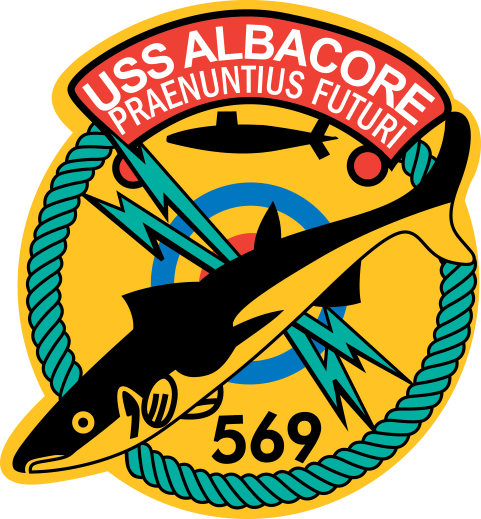The Diving Alarm Ballet by Mike Hemming
As I pass between the controllermen, the oogah, oogah, "Dive!," "Dive!" comes over the speakers and they leap to their sticks and rheostats.
The engine shut down air lever is hit, rheostats spun down, sticks are thrown as the ballet begins. Generator electricity wanes as the huge storage batteries are called on for power. Sticks pulled to new positions and rheostats spun back up to keep the motors turning. The flurry of intense stick activity over, minor adjustments made and times logged while listening, always for the sound of water doing something it shouldn't.
As I walk forward at the same time into the engineroom, the two men in each one do the shutdown dance. Throttles are slapped down, hydraulic levers pulled to the closed position to shut exhaust valves and drains opened by the throttleman. As his oiler spins the inboard exhaust valves the 32 turns to shut it, either the oiler or the throttleman (depending on who is closer) will have yanked the pin holding the great intake air valve open so it falls shut with a loud clang. His inboard exhaust valves shut, the oiler drops below to secure the sea valves that allow the seawater to cool the engines. Then, the throttleman checks everything secure one more time.
In the Control Room, the other area of great activity on a dive, lookouts almost free fall to their diving stations on the bow and stern planes. Quickly the bow planesman rigs out his planes and both he and the stern planesman set their charges to the prescribed angles for the dive. Arriving soon after the planesmen, the OOD, now the Diving Officer, gives the ordered depth to reach and the angle to do it. Then he checks that all is well and will watch the planesmen to learn if the trim needs changing.
The Chief of the Watch, having closed the huge main induction valve, will watch the Christmas Tree to see that all hull openings are closed. Then he pulls the vents to flood the main ballast tanks and watches the depth to signal the auxillaryman on the air manifold when to blow negative tank to the mark to stop our descent into the depths. The manifold operator will hammer open the valve and then close off the roaring rush of compressed air as needed. By this time, the trim manifold operator will have arrived from the engineroom.
After climbing over the stern planesman, he will be ready to pump and flood seawater to the tanks. This will trim up the boat to neutral buoyancy. In the Conn, the helmsman will have rung up standard speed so the boat will be driven under by the screws. The QM of the watch will dog the conning tower hatch when the OOD, the last man down from the bridge, pulls the lanyard to close it. There is no music to guide this dance except calm orders given and acknowledged. Started in a flurry of activity, it will end by winding down quietly to a state of relaxed vigilance by men practiced and confident of themselves and each other.
They have done this many times, this graceful and awkward descent into the depths. They do it as fast as is safely possible. This is where they belong, with many feet of sea hiding the strong steel of the hull. Men asleep in bunks, half-awakened by the raucous alarm and noisy ballet, drift back to deep sleep confident they are at home where they should be.
